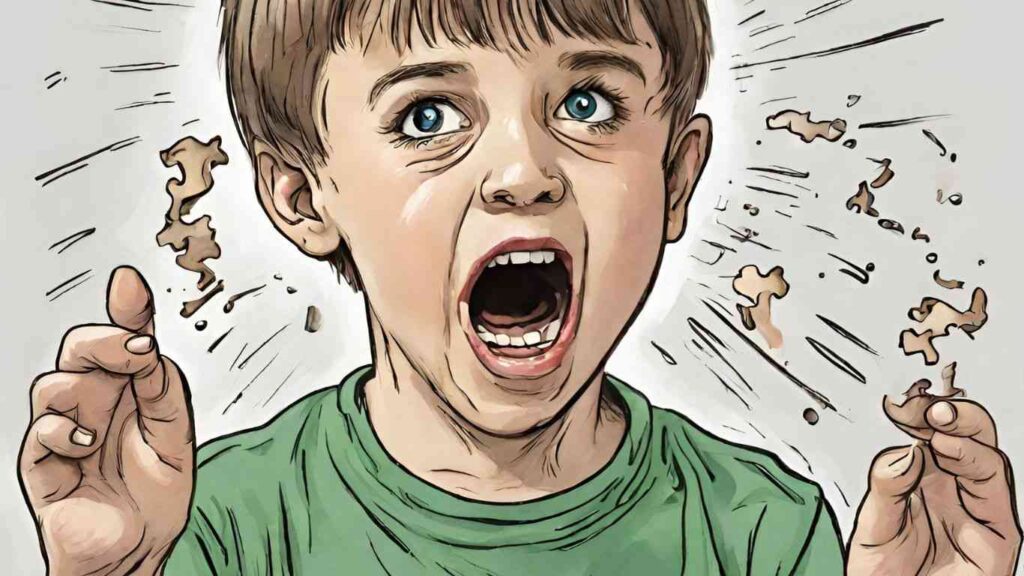The question of whether biting indicates autism is a common one. This article explores the link between these two, while also emphasizing the importance of understanding the underlying causes of biting behavior. We’ll delve into the communication struggles and sensory needs that might be driving this action.
Core Symptoms of Autism
The core symptoms of ASD include:
- Difficulty with social interaction and communication
- Restricted and repetitive patterns of behavior, interests, or activities
According to the CDC, children with ASD may have difficulty with social interaction, such as making eye contact, sharing interests, or engaging in reciprocal conversation. They may also have difficulty with nonverbal communication, such as facial expressions, body language, and tone of voice.
Individuals with ASD may also have restricted and repetitive patterns of behavior, interests, or activities. This can include repetitive movements, such as hand-flapping or rocking, as well as a focus on specific interests or routines.
While biting is not a core symptom of ASD, some individuals with ASD may engage in biting behavior. According to Mary Barbera, a behavior analyst and autism expert, biting can be a common behavior in children with ASD. However, it is important to note that biting can also be a behavior in typically developing children, and it is not necessarily a sign of ASD on its own.
Biting Behavior in Autism
Biting is a common behavior among children, and it can be seen in both neurotypical and autistic children. However, biting is more prevalent among autistic individuals than the general population.
Prevalence of Biting Among Autistic Individuals
According to research studies, biting is one of the most common self-injurious behaviors exhibited by autistic individuals. A study conducted by Oliver et al. (2012) found that 40% of autistic children engaged in biting behavior. Another study by Richdale and Schreck (2009) found that 23% of autistic children bit themselves or others.
Underlying Causes of Biting
Biting behavior in autistic individuals can have various underlying causes. One of the most common reasons why autistic individuals bite is to self-stimulate. According to Autism Spectrum Australia, biting can provide sensory stimulation, which can help autistic individuals regulate their emotions and reduce anxiety.
Another reason why autistic individuals bite is due to communication difficulties. Autistic individuals may find it challenging to express their needs and emotions verbally, leading to frustration and anxiety. Biting can be a way for autistic individuals to communicate their needs and emotions non-verbally.
In some cases, biting can be a sign of pain or discomfort. Autistic individuals may have sensory processing issues, which can make them more sensitive to touch, sound, and other environmental stimuli. Biting can be a way for autistic individuals to cope with the discomfort caused by sensory overload.
Differentiating Biting Causes
Biting is a common behavior in young children, and it can be challenging for parents and caregivers to determine the underlying cause. In some cases, biting can be a sign of autism, but it can also be caused by other factors. Here are some potential causes of biting behavior in children.
Children with autism often have sensory processing issues, which can cause them to seek out or avoid certain sensations. Some children may bite as a way to regulate their sensory input. For example, they may bite themselves or others to get the sensation of pressure or to feel the texture of the skin. Sensory processing issues can also cause children to become overwhelmed by certain sounds, lights, or textures, which can lead to biting behavior.
Another potential cause of biting behavior in children with autism is communication challenges. Children with autism may struggle to express their needs and wants, which can lead to frustration and aggression. Biting may be a way for them to communicate their needs or to get attention. For example, a child may bite a caregiver to get them to pay attention or to express their frustration with a situation.
Children with autism may also struggle with emotional regulation, which can lead to biting behavior. They may become overwhelmed by their emotions and have difficulty calming down. Biting may be a way for them to release their emotions or to cope with stress. For example, a child may bite themselves when they are upset or anxious.
Intervention Strategies
Biting is a common behavior among children with autism. It can be distressing for parents and caregivers, but there are intervention strategies that can help manage this behavior. In this section, we will discuss some of the effective intervention strategies for biting.
1. Behavioral Therapies
Behavioral therapies are often used to address biting behavior in children with autism. One such therapy is Applied Behavior Analysis (ABA), which involves breaking down complex behaviors into smaller, more manageable steps. ABA can help identify the triggers that lead to biting and develop strategies to prevent it. Positive reinforcement is used to encourage appropriate behavior, and negative reinforcement is used to discourage biting.
2. Communication Skill Enhancement
Children with autism may bite as a way of communicating their needs or frustrations. Improving their communication skills can help reduce biting behavior. Speech therapy can help children with autism learn to communicate effectively. Augmentative and alternative communication (AAC) devices can also be used to help children with limited verbal skills communicate their needs.
3. Sensory Integration Techniques
Sensory integration techniques can help reduce biting behavior in children with autism. Occupational therapy can help children with sensory processing issues learn to regulate their sensory input. Sensory integration techniques such as deep pressure, weighted blankets, and sensory diets can also be used to help children regulate their sensory input and reduce biting behavior.
Support and Resources
Biting in children with autism can be a challenging behavior to address. Fortunately, there are many resources available to parents and caregivers who need help managing this behavior. The following are some resources that can provide guidance and support:
Parental Guidance and Education
Parents can benefit from education and guidance on how to manage biting in children with autism. Parent training programs, such as those offered by the National Autism Association, can provide parents with the skills and knowledge they need to address challenging behaviors like biting. Through these programs, parents can learn about behavior management techniques, positive reinforcement strategies, and other tools that can help reduce biting in children with autism.
Professional Support Networks
Professional support networks can also be a valuable resource for parents and caregivers. A behavior analyst or therapist with experience working with children with autism can guide how to address biting behavior. They can also develop an individualized behavior plan that is tailored to the child’s specific needs. In some cases, medication may be recommended to help manage the behavior.
Community and Online Resources
There are many community and online resources available to parents and caregivers of children with autism. Support groups, such as those offered by Autism Speaks, can provide a forum for parents to connect with others who are facing similar challenges. Online resources, such as the Autism Society’s website, can provide information on behavior management strategies, as well as links to other helpful resources. Additionally, social media groups and forums can provide a space for parents to connect and share information and support.







